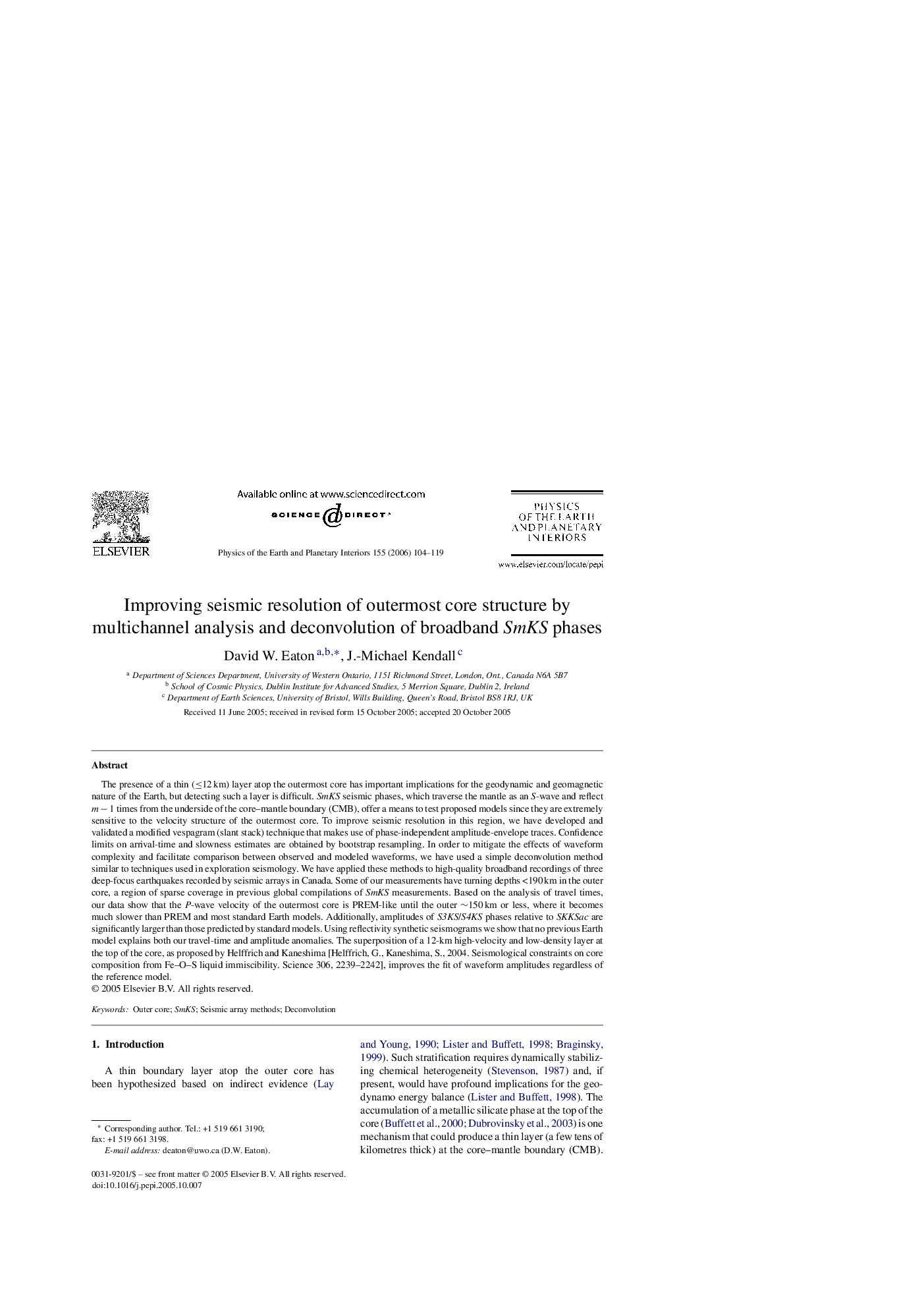| Article ID | Journal | Published Year | Pages | File Type |
|---|---|---|---|---|
| 4742999 | Physics of the Earth and Planetary Interiors | 2006 | 16 Pages |
Abstract
The presence of a thin (â¤12 km) layer atop the outermost core has important implications for the geodynamic and geomagnetic nature of the Earth, but detecting such a layer is difficult. SmKS seismic phases, which traverse the mantle as an S-wave and reflect m â 1 times from the underside of the core-mantle boundary (CMB), offer a means to test proposed models since they are extremely sensitive to the velocity structure of the outermost core. To improve seismic resolution in this region, we have developed and validated a modified vespagram (slant stack) technique that makes use of phase-independent amplitude-envelope traces. Confidence limits on arrival-time and slowness estimates are obtained by bootstrap resampling. In order to mitigate the effects of waveform complexity and facilitate comparison between observed and modeled waveforms, we have used a simple deconvolution method similar to techniques used in exploration seismology. We have applied these methods to high-quality broadband recordings of three deep-focus earthquakes recorded by seismic arrays in Canada. Some of our measurements have turning depths <190 km in the outer core, a region of sparse coverage in previous global compilations of SmKS measurements. Based on the analysis of travel times, our data show that the P-wave velocity of the outermost core is PREM-like until the outer â¼150 km or less, where it becomes much slower than PREM and most standard Earth models. Additionally, amplitudes of S3KS/S4KS phases relative to SKKSac are significantly larger than those predicted by standard models. Using reflectivity synthetic seismograms we show that no previous Earth model explains both our travel-time and amplitude anomalies. The superposition of a 12-km high-velocity and low-density layer at the top of the core, as proposed by Helffrich and Kaneshima [Helffrich, G., Kaneshima, S., 2004. Seismological constraints on core composition from Fe-O-S liquid immiscibility. Science 306, 2239-2242], improves the fit of waveform amplitudes regardless of the reference model.
Keywords
Related Topics
Physical Sciences and Engineering
Earth and Planetary Sciences
Geophysics
Authors
David W. Eaton, J.-Michael Kendall,
